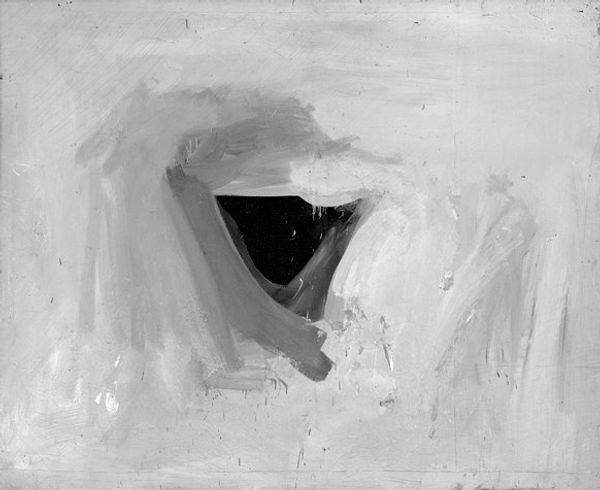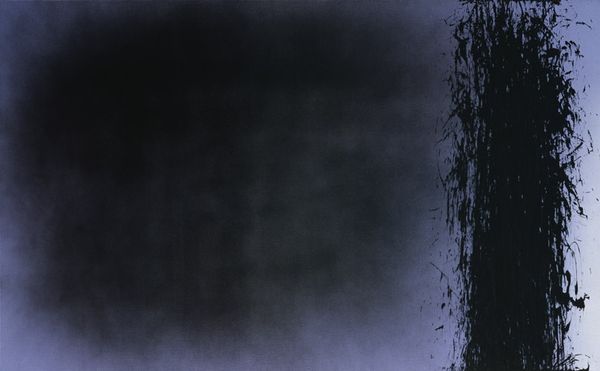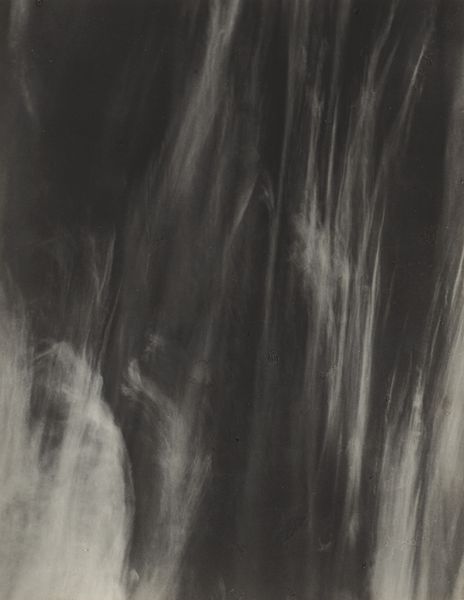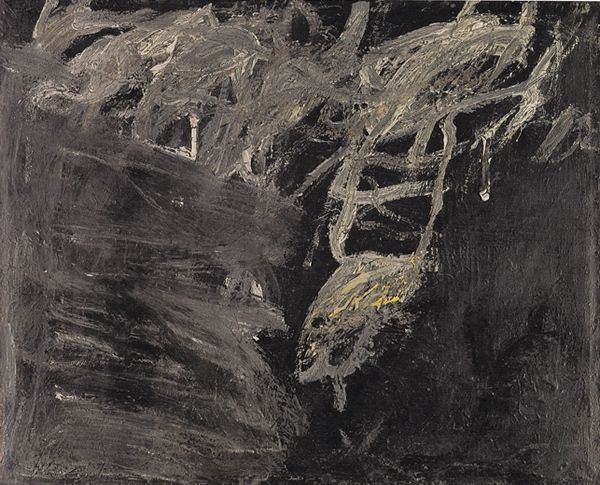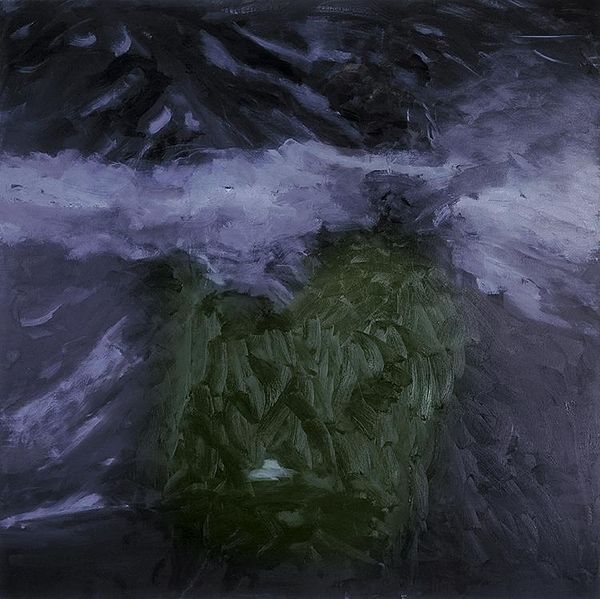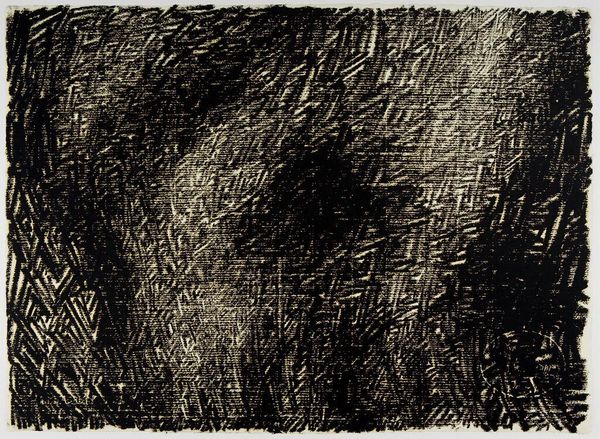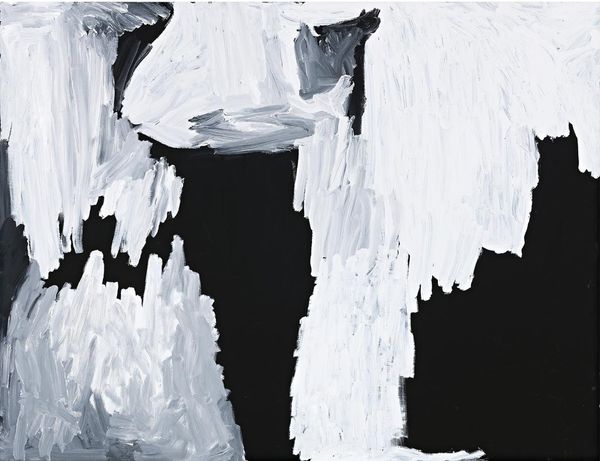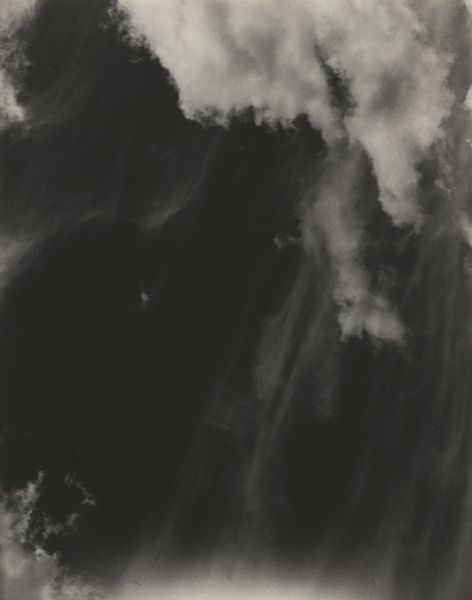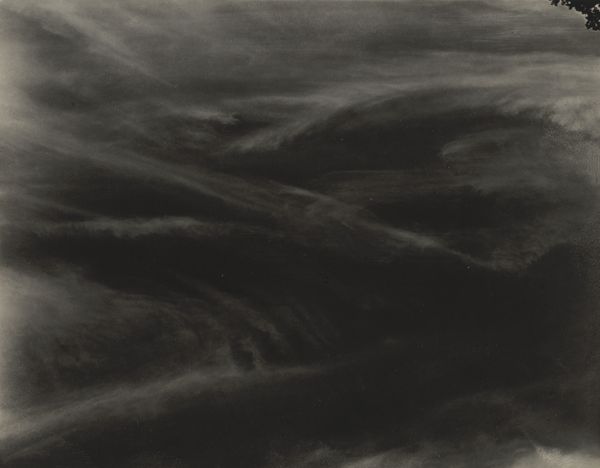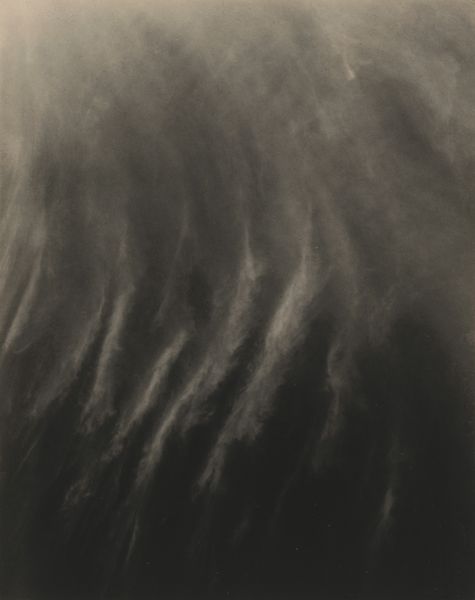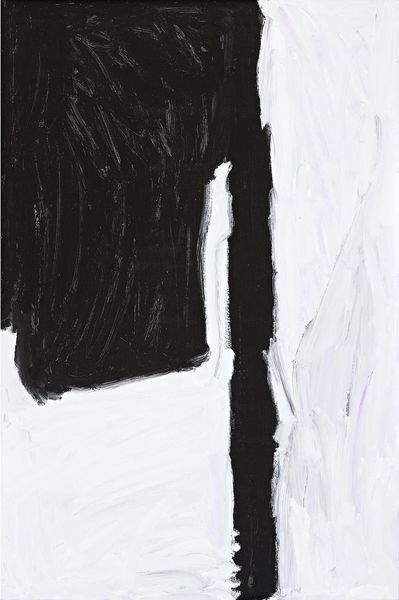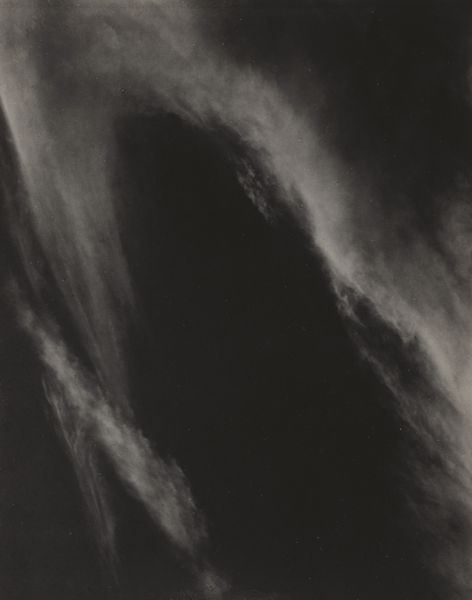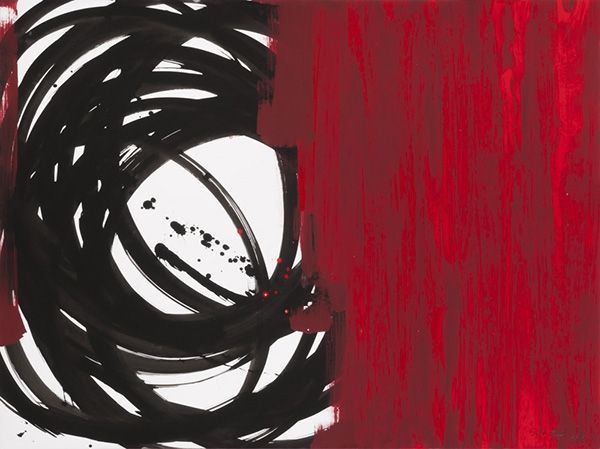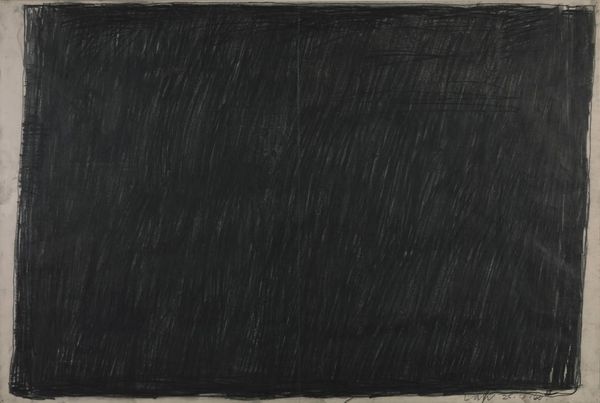
Copyright: Sally Gabori,Fair Use
Curator: "Thundi" by Sally Gabori, created in 2011 using acrylic paint. Gabori, a Kaiadilt artist from Bentinck Island, began painting relatively late in life, and her works often reference her connection to her ancestral land. Editor: The immediate impact for me is somber, almost desolate. The stark contrast between the white strokes and the black background evokes a sense of loss, or perhaps a memory fading into the darkness. Curator: It’s interesting you say that. Gabori's work is rarely about desolation, even when it uses darker tones. Understanding her historical context, as part of the Stolen Generation removed from her land, reshapes our reading of this abstraction. Perhaps the darkness speaks to the imposed distance and struggle for reconnection. Editor: Ah, yes, understanding her biography provides such a lens. Does the composition shed light on this? The form on the left has an enclosure, a barrier of sorts, yet the mark on the right feels so isolated, a sliver of something… Curator: It could speak to cultural divides, where a form, or way of living, is separated or diminished in the greater darkness imposed by the institution. We often forget how artworks can carry such burden from their artists. The white lines could stand for both resistance and imposed boundaries. Editor: So the act of abstraction then, in Gabori's hands, becomes an active political expression rather than a purely aesthetic choice. The very act of re-membering a place through paint. It takes abstract expressionism away from the cold war narratives where it was typically rooted, toward new intersectional readings. Curator: Precisely. Viewing Gabori's paintings as decolonizing acts reshapes the established canon. She painted in dialogue with her community. And situating them within feminist theories, you can argue these visual forms, even with stark color stories, function as assertive declarations of existence. Editor: I am left with a sense of the powerful stories hidden beneath even the simplest forms. Art can, indeed, transform observation into potent declarations of place and identity.
Comments
No comments
Be the first to comment and join the conversation on the ultimate creative platform.
